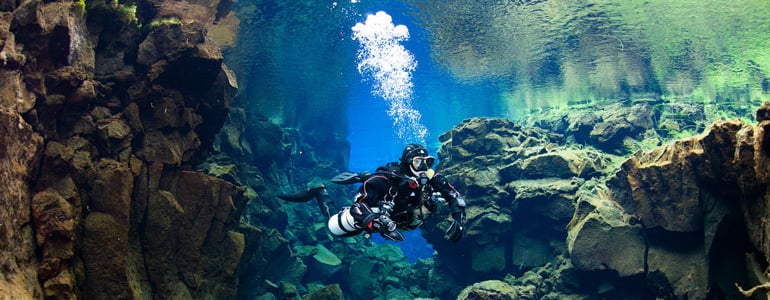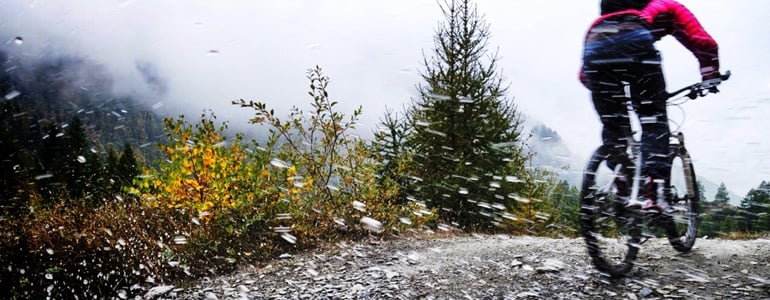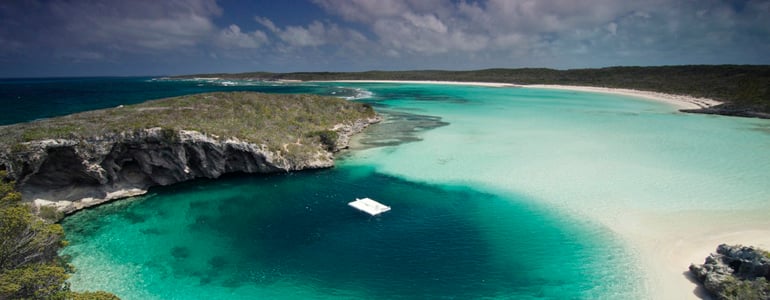

Suunto Blog
Ueli Steck nominated for Adventurer of the Year award
Congratulations to Suunto ambassador, Ueli Steck who has been nominated for the National Geographic 2015 Adventurers of the Year award for his speed ascent of the south face of Annapurna. The award recognizes the amazing achievements of outstanding individuals in exploration, conservation, humanitarianism, and adventure sports in 2014.Steck’s solo climb of the 8,091 m peak took just 28 hours there and back – a feat that should normally take at least four days. He says it’s the biggest climb he’s ever done and admits he took too much risk to complete it. An avalanche hit him at 7,000 m and after that he accepted that he might not come back alive: “I was just climbing, totally accepting that it might be a one-way ticket,” he told the magazine.
Ueli Steck, photographed in Chamonix in 2013. ©Jon Griffith PhotographyObservers believe Steck has changed the face of modern mountaineering with his fast-and-light style. But he acknowledges that Annapurna was a once in a lifetime experience: “I don’t want to do a route like this again in this style.”So what’s next for “the Swiss Machine”: ‘I really love climbing. It’s like a living process. Right now I’m just focused on the 8,000-meter peaks. I don’t know what’s next. I don’t think I will get tired of climbing.”
Now is your chance to vote for Ueli to be the 'People's Choice' Adventurer of the Year. Last year it was won by Kilian Jornet. Let's make sure it's Ueli, the Swiss Machine for 2015.

Suunto releases the Suunto DM5 dive planner
Suunto is rolling out its latest dive planner, Suunto DM5. The Suunto DM5 (Windows/Mac compatible) allows you to download your dive logs for advanced analysis and create dive plans.
DM5 offers a quick and easy way to plan your profile and gases. You can also plan a series of dives. Transfer planned gases and settings to your compatible dive computer with a single click.
For the upcoming Suunto EON Steel, the fully customizable dive computer with a bright color screen, DM5 provides display customization and firmware updates.
DM5 supports the following Suunto dive computers: D4, D6, D9, D4i, D4i Novo, D6i, D9tx, DX, Zoop, Vyper, Vytec, Vytec DS, Cobra, Vyper2, Vyper Air, Cobra2, Cobra3, HelO2, EON Steel. Once installed, DM5 automatically recognizes your Suunto dive computer.
For further information about DM5, please click here.
Instructions for new users and current DM4 users:Download Suunto DM5 for free here:FOR WINDOWSFOR MAC
Current DM4 users will automatically receive a notification to update to DM5.

March Madness, surviving an avalanche and his winter goals: Greg Hill shares all.
If there's one person who looks forward to the arrival of winter, it's Suunto ambassador Greg Hill. Last winter he pulled off the incredible feat of skiing 100,000 vertical meters in a month. But after breaking his leg in Pakistan this summer, he says he's looking to just hang and enjoy the mountains this winter. Below, he talks about his accident and how he can't believe he pulled off the March Madness project. Winter is coming. Excited? I love winter! I am apprehensive because I can't really say how it will go. I know I will need some boot work to ensure comfort with my newly healed leg. But I also know that my passion is still intact and ready for more adventures.
How's the leg? The leg is getting better every day, but still a long road ahead. I will be 90% at the start of the season but the last 10% will take me some time. As it stands I am walking with a slight limp and can go for short hikes.What happened? What happened was that I was overtaken by my desire for more. We had hiked up a great 5,500 m summit, that was previously unclimbed. Our line up was a decent line and would have made for a great descent. But my desire for exploration led me to try and ski a different line down. It was also a better line for filming. I liked the backdrop and figured it would look great on video. So because they were filming I skied it with less caution, since caution doesn't look as good as confidence on video.
Greg Hill doing what he does best – ski mountaineering in his local hills. ©Bruno LongAnd the lesson there? To stick to my way of skiing regardless of video. Safety is always first priority, not looking good on video. I sure didn't look good as the avalanche chased me down and took me out. Lots of people would say it was the law of averages but I seriously know that had I followed my typical rules I would have been fine.
March Madness was an incredible success. I guess you'd prefer to remember 2014 for that? Honestly, I can't believe I pulled that off, to think that I was able to average over 3,000 m up a day for a month is a little mind-boggling. Even though I did it, it's hard to imagine although I do know what drive and desire can do. Am psyched on the success of that month and can't wait to get back to 100% and onto another challenge.Recovery juice: Greg gets some home made smoothie down. © zooom.at/Markus Berger
What's been the recovery process?I have had physio 2-3 times a week, plus some swimming but also I have been road biking more than anything. Road biking is the best way to get my fitness back while also working on ankle movement and leg strength. The new Ambit3 Peak is a real motivator to push my fitness.What are your winter goals?I probably won't be able to pull off any extraordinary feats this winter but I will still seek out mountains I have not skied and adventures where I can. This accident has taught me a lot and I am keen on taking this learning and continuing to push myself in the mountains. My passion is still as strong as ever.Main image top: zooom.at/Markus Berger

Suunto EON Steel: tested in the tropics to the Arctic
The Suunto EON Steel was created with the feedback of active divers from all over the world. Among them was our own ambassador Jill Heinerth. In case you don't know Jill, she's a renowned underwater explorer and 2013 recipient of the Sir Christopher Ondaatje Medal for exploration from the Royal Canadian Geographical Society. She's dived inside caves, underneath icebergs and in some deep waters all over the world – the ideal person to put the Suunto EON Steel through its paces. Here's what she had to say about Suunto's new launch: We're guessing you gave it a good testing! I first took the EON Steel to Christmas Island on a unique cave and deep ocean exploration project sponsored by National Geographic. The device was in its earliest form, but I could already understand the potential of the product. I wasn't really supposed to show it to anyone, so I had to quietly hide it in my pocket until we could snap a few photos! I finally had the chance to dive a fully functional device in France when other Suunto Global Distributors got to see it for the first time. The boat was buzzing with excitement form everyone that used it. And you also used in the Arctic right? Later, I took a unit to Newfoundland and on the Sedna Epic Expedition to the Arctic this summer. It was on these trips that I had the full opportunity to appreciate its full potential and functionality. I realize now that I have taken it from the warmest to the coldest conditions on the planet in the last year. I'm never very kind to my gear but it doesn't need to be handled with kid gloves. It is well built and simply works!
Jill Heinerth tested the Suunto EON Steel in both warm and cold climates. ©Jill Heinerth
What was the feedback you gave Suunto?What I saw in the Suunto EON was far beyond a typical diving computer. The EON is capable of taking a diver from their first dives, through technical and eventually CCR diving. The beauty is that the diver can customize their display and won't be mired in unnecessary features that they are not ready to use. As they progress, they can move to new modes of diving and use additional features. Furthermore, I envision the EON as more of a platform than a singular device that will need to be replaced. How do you like the product?I love the quality build and easy readability of the EON. I also love being able to plug it in for recharge or downloading.How is it different to previous dive computers you've used. The EON feels fully modern and fresh – more like my iPhone than a tired old diving computer display that looks like a relic of Windows 98. The EON interface is simple and intuitive and although it came with excellent instructions, there was no need to refer to them. The three button operation was obvious and features were easily found and activated. The audible alerts are also intuitive with unique, well designed sounds that make sense. The alarms alone can guide the diver to correct their behavior. Anything else? I was using the EON with a cave survey class recently and should add that the compass feature on the computer is extremely easy to access, very accurate and quick to respond. This feature can be used easily without losing other critical display information.
Jill Heinerth is a Suunto ambassador. Discover more about her exploits and photography here.
All images ©Jill Heinerth

24 hr mountain bike challenge
We're all familiar with training rides. Sometimes you go hard and aim for a big distance day. On others it's more about the intensity and quality. But what if you're ice climbers Matthias Scherer and Tanja Schmitt and you're looking for the perfect training for ice climbing? Well, naturally you go for a non-stop 24 hour mountain bike challenge and try for as much distance and elevation as possible!
Check the video below for a little teaser on how they got on:
“It worked out great,” Matthias tells us. “It was a perfect test and training for our 24h ice challenge coming this winter.” This is a project to ice-climb non stop for 24 hours. “The night was quite cold and that was exactly what we wanted to have – winter like conditions on the descents. We both achieved our goals – me by cycling over 8,000 m of vertical and Tanja by passing 7,000 m.
He adds: “The circuit we cycled was a true MTB circuit – 75% rough mountain roads with loose rocks, gravel and mud!”
All images ©Matthias Scherer. Location: Urtier Valley, Cogne, Italy

Suunto Vertical Blue: the venue that makes it so unique
The location for the Suunto Vertical Blue could not be more conducive to diving deep. Dean's Blue Hole is a natural wonder and is the deepest known blue hole in the world. Situated off Long Island in the Bahamas, it opens up approximately 10 m beneath the surface before plunging to 202 m. “It has a reputation for being the greatest freediving location on the planet,” says multiple record holder and Vertical Blue organiser Will Trubridge. “Its deep, warm and calm waters which are literally a step off the beach, provide the best environment for freedivers to attempt to break national or world records, or just to exceed their own personal bests.
Spectators on the beach. Photo ©zooom.at/Samo Vidic
“Spectators can watch the whole event from the warm Caribbean water, while feasting on local seafood salad that is prepared on the beach,” he adds. “It is an event like no other, not just in freediving, but in all sport.”One of the area's attractions is also its remoteness. Long Island, Bahamas is not as developed as many Caribbean destinations – just getting there is an adventure. Hotels and bars are laid back and you're unlikely to bump into lots of other tourists. In fact, during the nine days of Suunto Vertical Blue, probably every hotel guest will be a fellow freediver, which adds to the familiar atmosphere that makes the event so special. Dean's Blue Hole, the view from 15m. Photo: zooom.at/Agustin Munoz














































































